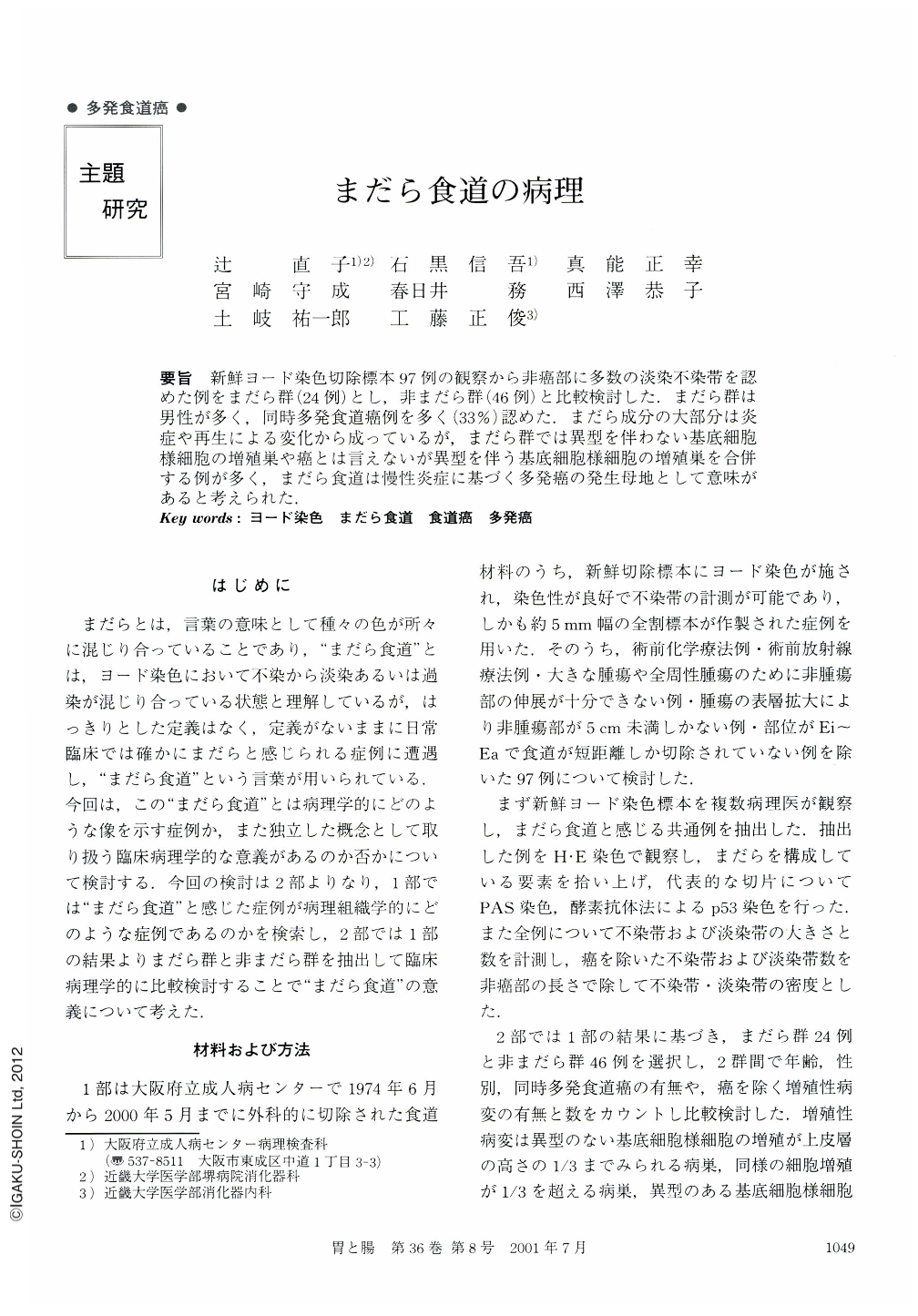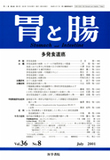Japanese
English
- 有料閲覧
- Abstract 文献概要
- 1ページ目 Look Inside
- サイト内被引用 Cited by
要旨 新鮮ヨード染色切除標本97例の観察から非癌部に多数の淡染不染帯を認めた例をまだら群(24例)とし,非まだら群(46例)と比較検討した.まだら群は男性が多く,同時多発食道癌例を多く(33%)認めた,まだら成分の大部分は炎症や再生による変化から成っているが,まだら群では異型を伴わない基底細胞様細胞の増殖巣や癌とは言えないが異型を伴う基底細胞様細胞の増殖巣を合併する例が多く,まだら食道は慢性炎症に基づく多発癌の発生母地として意味があると考えられた.
To study the meaning of an esophagus with multiple small iodine-unstained lesions, comparative study was made between two groups of esophagectomy specimens. All specimens were dyed with Lugol's iodine soon after operation. The number and size of all unstained lesions except carcinomas were counted and measured. The longitudinal length of non-cancerous areas was also measured and the number of unstained lesions/length of non-cancerous areas (foci/cm) was calculated. Twenty-four cases that had more than 6 foci/cm of unstained lesions (group 1) and 46 cases that had less than 2 foci/cm of unstained lesions (group 2) were compared.
Eight cases of group 1 (33%) had multicentric esophageal cancers as compared with 6 cases of group 2 (13%). 38% of group 1 and 13% of group 2 had intraepithelial atypical basaloid cell proliferative lesions, and 58% of group 1 and 17% of group 2 had intraepithelial non-atypical basaloid cell proliferative lesions. Most of the unstained lesions of both groups were smaller than 2 mm in diameter and, microscopically, the thickness of the prickle cell layer decreased and keratohyalin granule and/or parakeratosis were seen in superficial layers without atypia. Those lesions seemed to be due to inflammatory change. We concluded that an esophagus with multiple small iodine-unstained lesions has extensively inflamed mucosa and has a high likelihood of developing multicentric esophageal cancers.

Copyright © 2001, Igaku-Shoin Ltd. All rights reserved.


